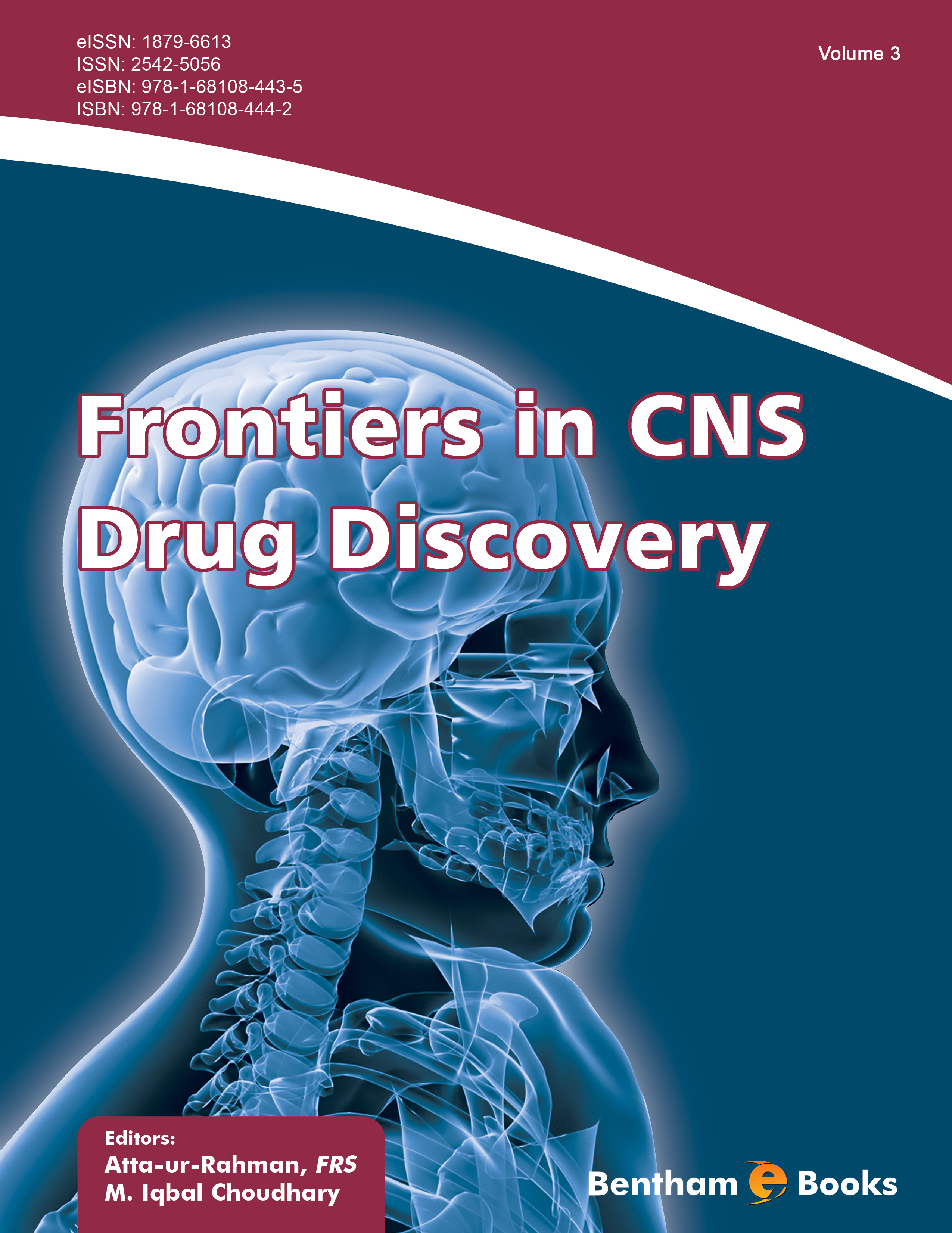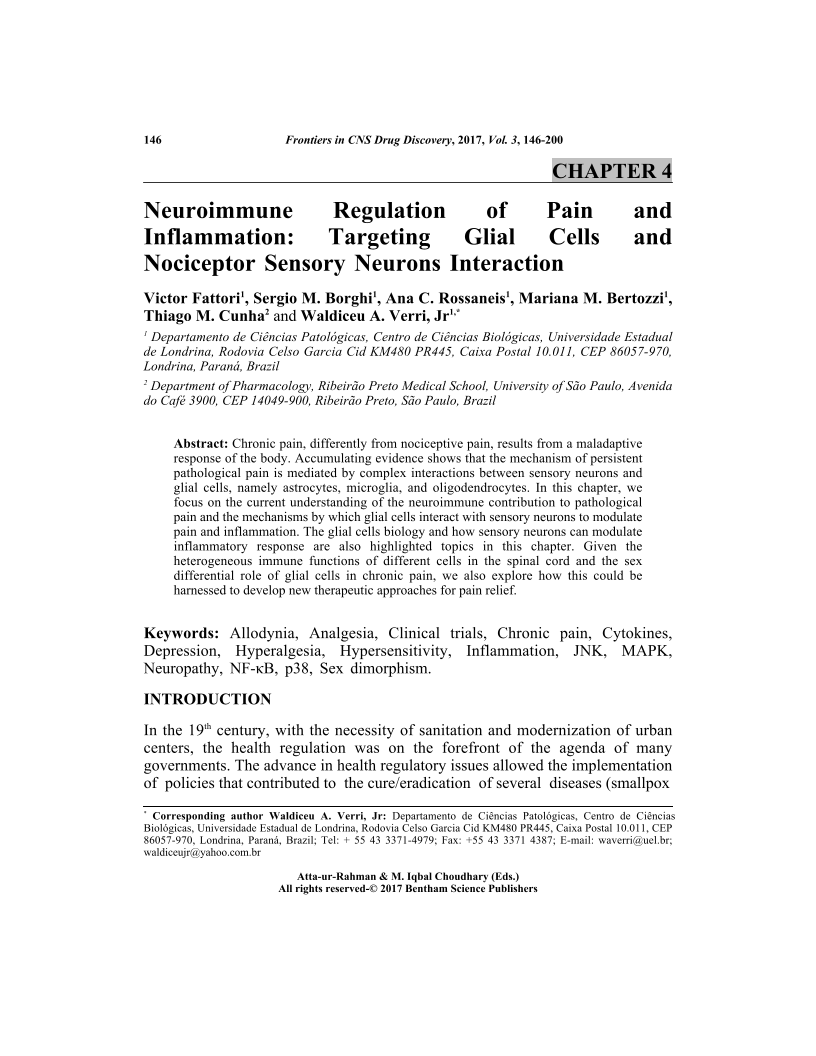Neuroimmune Regulation of Pain and Inflammation: Targeting Glial Cells and Nociceptor Sensory Neurons Interaction

- Authors: Victor Fattori, Sergio M. Borghi, Ana C. Rossaneis, Mariana M. Bertozzi, Thiago M. Cunha, Waldiceu A. Verri6
-
View Affiliations Hide Affiliations6 Departamento de Ciencias Patologicas, Centro de Ciencias Biologicas, Universidade Estadual de Londrina, Rodovia Celso Garcia Cid KM480 PR445, Caixa Postal 10.011, CEP 86057 970, Londrina, Parana, Brazil.
- Source: Frontiers in CNS Drug Discovery: Volume 3 , pp 146-200
- Publication Date: December 2017
- Language: English
Neuroimmune Regulation of Pain and Inflammation: Targeting Glial Cells and Nociceptor Sensory Neurons Interaction, Page 1 of 1
< Previous page | Next page > /docserver/preview/fulltext/9781681084435/chapter-4-1.gif
Chronic pain, differently from nociceptive pain, results from a maladaptive response of the body. Accumulating evidence shows that the mechanism of persistent pathological pain is mediated by complex interactions between sensory neurons and glial cells, namely astrocytes, microglia, and oligodendrocytes. In this chapter, we focus on the current understanding of the neuroimmune contribution to pathological pain and the mechanisms by which glial cells interact with sensory neurons to modulate pain and inflammation. The glial cells biology and how sensory neurons can modulate inflammatory response are also highlighted topics in this chapter. Given the heterogeneous immune functions of different cells in the spinal cord and the sex differential role of glial cells in chronic pain, we also explore how this could be harnessed to develop new therapeutic approaches for pain relief.
-
From This Site
/content/books/9781681084435.chapter-4dcterms_subject,pub_keyword-contentType:Journal -contentType:Figure -contentType:Table -contentType:SupplementaryData105

